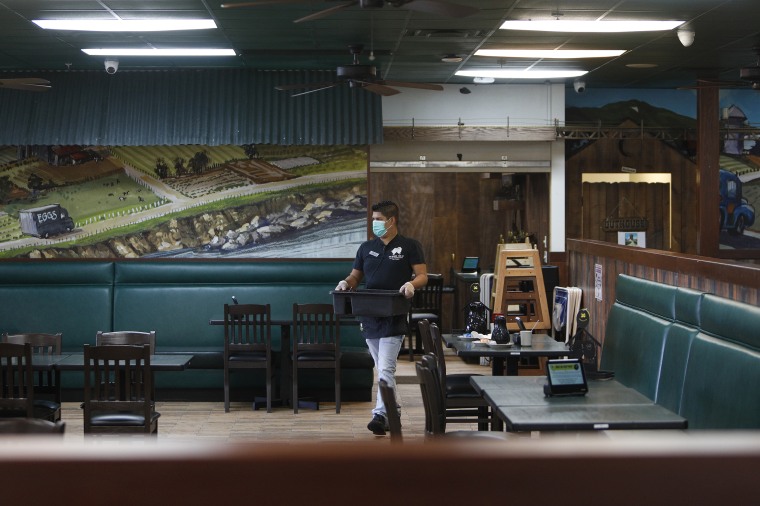Restaurants and bars should consider installing sneeze guards at their registers. Mass transit workers should close every other row of seats on their buses. Students should eat lunch in their classrooms instead of congregating in cafeterias.
These are among the social distancing measures that the Centers for Disease Control and Prevention listed in a document it quietly released on its website this week outlining recommendations for reopening restaurants, mass transit, schools and child care programs across the United States during the coronavirus pandemic.
The detailed 60-page document, which was posted on the CDC's website with no accompanying announcement from the public health agency, comes weeks after many states have already ended or partly ended their lockdowns.
Full coverage of the coronavirus outbreak
It also comes amid reports of strife between the CDC and the White House: While the White House released a plan called Opening Up America Again in April that incorporated some CDC suggestions, it largely left reopening decisions up to governors and local officials.
Meanwhile, the CDC's coordinated, national approach — with more details and restrictions — had been shelved by Trump administration officials for being too specific, The Associated Press reported last week after obtaining parts of the CDC guidance.
Not all businesses and institutions should reopen yet, depending on the number of coronavirus cases in their local areas, the CDC cautioned. It recommended a three-phase approach for each community, each one more permissive than the last, provided rates of transmission do not spike.
In Step 1 of the plan for schools, for example, schools that are closed should remain closed. In Step 2, they could be open with "enhanced social distancing measures" and attendance should be restricted to those who live in the local area only. In Step 3, they could be open with distancing measures and attendance restricted to areas with limited transmission of the coronavirus.
"While some communities will progress sequentially through the reopening phases, there is the possibility of recrudescence in some areas," the CDC acknowledged, referring to the possibility of a new outbreak. "Given the potential for a rebound in the number of cases or level of community transmission, a low threshold for reinstating more stringent mitigation standards will be essential."
For all institutions, the CDC recommended thorough disinfection for high-traffic areas: door handles of businesses, turnstiles in mass transit stations, playground equipment at schools. It urged face coverings anywhere it would be impossible to practice social distancing, including among staff members in child care settings and among older children in schools. And it encouraged plentiful hand sanitizer in schools, as long as it was safely stored away from children, and on tabletops at restaurants.
Tener Goodwin Veenema, a professor and visiting scholar at the Johns Hopkins Center for Health Security, welcomed the federal guidance but said she felt that in some cases, the CDC's wording was too weak — citing examples where the document called the measures "considerations." (For restaurants and bars, for instance, the document advises, "Consider assigning workers at high risk for severe illness duties that minimize their contact with customers and other employees.")
"When we have a pandemic of this nature, people need facts, and they need definitive action statements: 'This is what needs to happen in the presence of an ongoing outbreak,'" Veenema said.
That is especially important, she said, given the mixed messages the federal government has sent about reopening as politicians and public health officials tangle over stay-at-home orders to stop the spread of the disease, which has sent the economy into a free fall.
The tension among agencies "has created a lot of confusion," Veenema said. "It's perpetuated fear, and it's led to some ambiguous decision-making."
The White House did not immediately respond to a request for comment on the guidelines.
All 50 states have either opened or partly reopened, even though there is no vaccine or cure for the coronavirus. As of Wednesday, there had been more than 1.5 million cases of COVID-19 in the U.S., with about 93,000 deaths.


